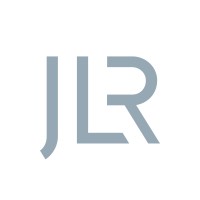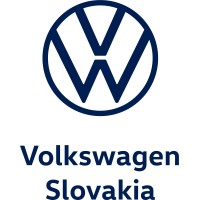Company Cyber Security Posture
NANA
NA Company Details
NA
NA
NA
NA
NA
NA
Scan still pending
NA
NA
Between 200 and 800
This score is AI-generated and less favored by cyber insurers, who prefer the TPRM score.
 NA Global Score
NA Global Score.png)

Company Scoring based on AI Models
| Model Name | Date | Description | Current Score Difference | Score |
|---|---|---|---|---|
| AVERAGE-Industry | 03-12-2025 | This score represents the average cybersecurity rating of companies already scanned within the same industry. It provides a benchmark to compare an individual company's security posture against its industry peers. | N/A | Between 200 and 800 |
Company Cyber Security News & History
| Entity | Type | Severity | Impact | Seen | Url ID | Details | View |
|---|
Company Subsidiaries

NA
Access Data Using Our API

Get company history
.png)
NA Cyber Security News
Details Disclosed for Mercedes-Benz Infotainment Vulnerabilities
Kaspersky has disclosed the details of over a dozen vulnerabilities discovered in a Mercedes-Benz MBUX infotainment system.
Mercedes-Benz Owners Warned Of Hacking Danger—13 Security Issues Found
It's worrying enough that hackers are targeting your account passwords, your iPhone and even your, erm, sex toys.
Mercedes-Benz USA names Adam Chamberlain as new CEO
Mercedes-Benz USA names Adam Chamberlain as new CEO · Copy Link · Share on X · Share on Linkedin · Share on Facebook. Chamberlain will lead over ...
Mercedes-Benz North American HQ Moving to Georgia
Mercedes-Benz will establish its North American headquarters in Atlanta, Georgia to centralize and unite key corporate functions. In addition to ...
Mercedes-Benz USA Announces Leadership Transition: Jee-Seop Kim to Succeed Heike Scheuble as Head of Sales & Marketing, Mercedes-Benz Vans North America
Heike Scheuble, currently Head of Sales & Marketing, Mercedes-Benz Vans North America, will retire from Mercedes-Benz on September 2, 2025, ...
Mercedes-Benz just poached a top exec from Fortune 500 dealer group Lithia to run the brand's U.S. sales operations
Mercedes is in the process of reshuffling its leadership team in key markets following the appointment of new global sales boss Mathias ...
Mercedes-Benz USA to recall over 27,000 vehicles over risk of engine stall, NHTSA says
Sept 27 (Reuters) - Mercedez-Benz USA (MBGn.DE) , opens new tab is recalling more than 27,000 vehicles due to a potential risk of the engine ...
Tuscaloosa Cybersecurity Job Market: Trends and Growth Areas for 2024
Explore Tuscaloosa's cybersecurity job market in Alabama, uncover trends, growth areas for 2024, and how to start your career journey.
Announcing the 2025 Legalweek Leaders in Tech Law Awards Finalists, Lifetime Achievement Winners & Monica Bay Women of Legal Tech Winners
The fifth annual Legalweek Leaders in Tech Law Awards honors individuals and organizations who have been at the forefront of legal innovation ...

NA Similar Companies

BorgWarner
As a global product leader for over 130 years, we deliver innovative and sustainable mobility solutions. Guided by our commitment to inclusion, integrity, excellence, responsibility and collaboration—and our pledge to reach carbon neutrality by 2035—we’re leading the automotive industry to a future

Jaguar Land Rover Italia
JLR è un’azienda unica nel settore automobilistico globale, in cui convivono competenza e creatività nel progettare modelli senza eguali, un’ineguagliabile capacità cognitiva circa le future esigenze dei propri clienti in termini di lusso, una forza emozionale dei brand, un innato spirito britannico

Lexus Europe
Launched in 1989, Lexus is a global luxury lifestyle brand offering a full range of premium vehicles, including the LS, ES and IS sedans, the CT hatchback, the LC and RC coupes, and the NX, RX, GS and LX SUVs. Renowned for brave design, outstanding craftsmanship and sophisticated technology, Lexus

Ferrari
Ferrari's story officially began in 1947 when its first road car, the 125 S, emerged from the gate of no. 4 Via Abetone Inferiore in Maranello. The iconic two-seater went on to win the Rome Grand Prix later that year and shortly thereafter was developed into a refined GT roadster. The company has tr

FORVIA
FORVIA comprises the complementary technology and industrial strengths of Faurecia and HELLA. With over 300 industrial sites and 77 R&D centers, 150,000 people, including more than 35,000 engineers across 40+ countries, FORVIA provides a unique and comprehensive approach to the automotive challenge

Volkswagen Slovakia
Volkswagen Slovakia je najväčším automobilovým producentom v Slovenskej republike. V súčasnosti má na Slovensku dva závody, situované v Bratislave a Martine. Volkswagen Slovakia s.r.o. bol založený v roku 1991, produkcia sa rozbehla začiatkom roka 1992. Závod v Bratislave je jedine

Frequently Asked Questions
Explore insights on cybersecurity incidents, risk posture, and Rankiteo's assessments.
NA CyberSecurity History Information
How many cyber incidents has NA faced?
Total Incidents: According to Rankiteo, NA has faced 0 incidents in the past.
What types of cybersecurity incidents have occurred at NA?
Incident Types: The types of cybersecurity incidents that have occurred include .
Additional Questions
What Do We Measure?
















Every week, Rankiteo analyzes billions of signals to give organizations a sharper, faster view of emerging risks. With deeper, more actionable intelligence at their fingertips, security teams can outpace threat actors, respond instantly to Zero-Day attacks, and dramatically shrink their risk exposure window.
These are some of the factors we use to calculate the overall score:
Identify exposed access points, detect misconfigured SSL certificates, and uncover vulnerabilities across the network infrastructure.
Gain visibility into the software components used within an organization to detect vulnerabilities, manage risk, and ensure supply chain security.
Monitor and manage all IT assets and their configurations to ensure accurate, real-time visibility across the company's technology environment.
Leverage real-time insights on active threats, malware campaigns, and emerging vulnerabilities to proactively defend against evolving cyberattacks.




